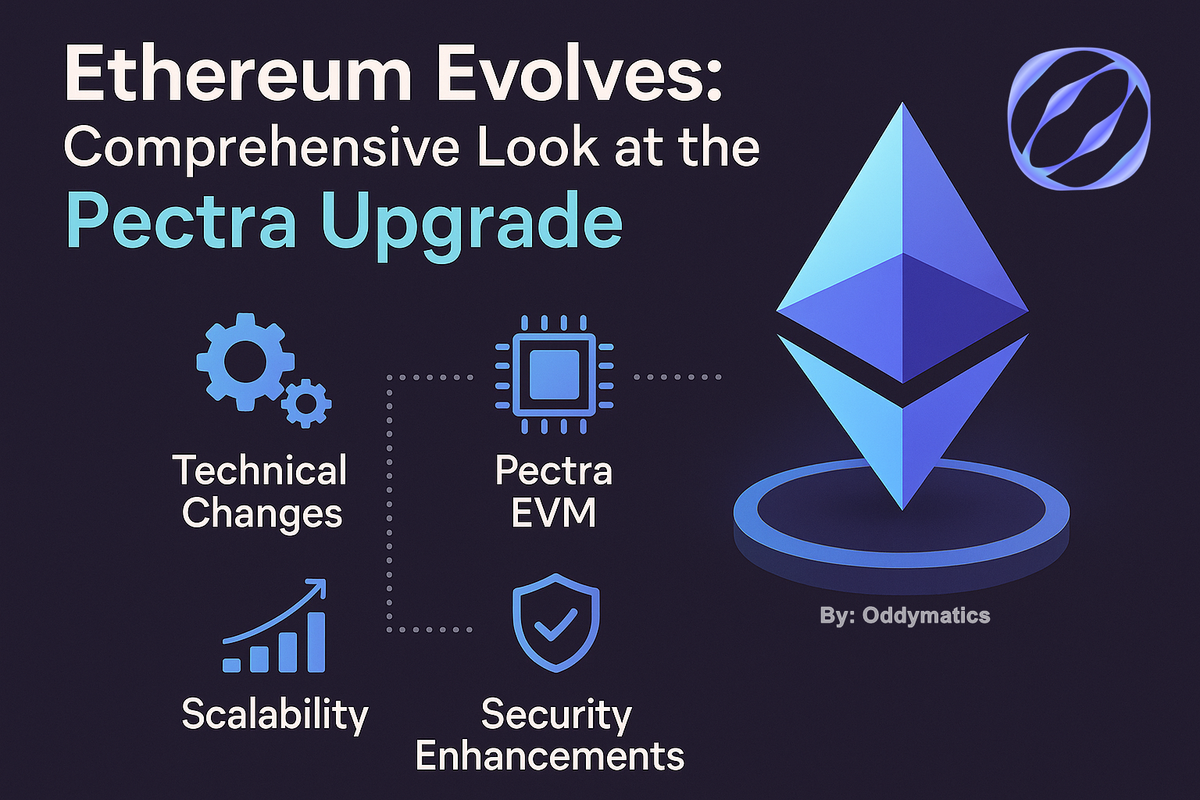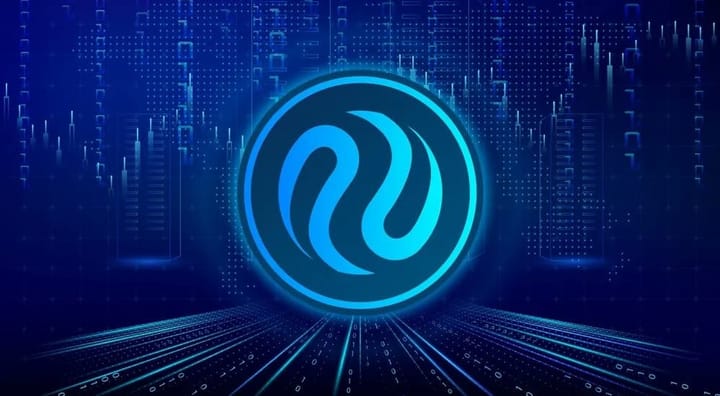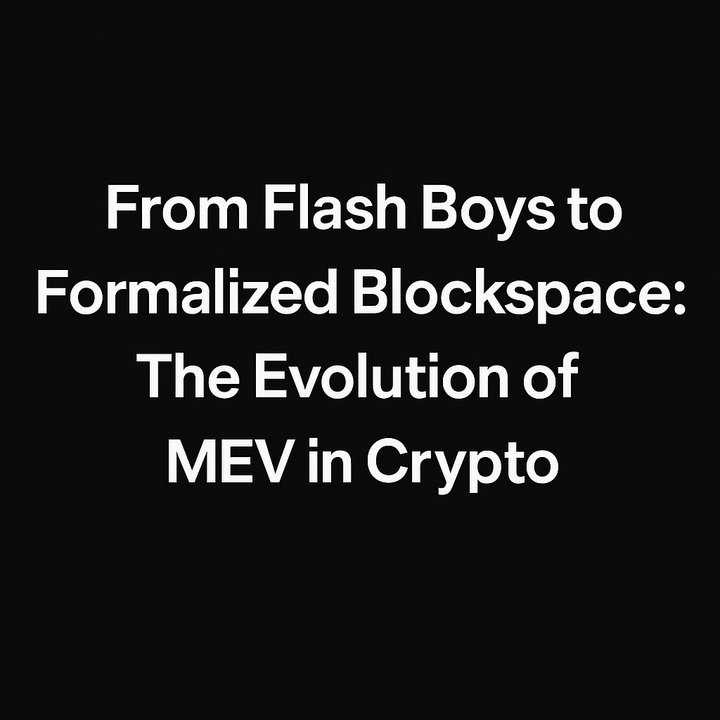Ethereum Evolves: A comprehensive Look at the Pectra Upgrade

Introduction
Ethereum continues to evolve as the leading smart contract platform in the blockchain ecosystem. Following the successful implementation of major upgrades like the Merge and Shanghai. The Pectra upgrade is a planned hard fork of the Ethereum network expected to take place in late 2025 or early 2026. It merges the core features of the Prague upgrade on the execution layer (EL) and Electra on the consensus layer (CL). This comprehensive update is focused on usability, efficiency, and preparing Ethereum for future scalability enhancements.
Key Features & Expected Improvements in Pectra
- EVM Object Format (EOF)
- Introduces a more efficient structure for Ethereum smart contracts, improving execution and reducing gas costs.
- Enables better code validation, upgradability, and separation of code/data.
- EIP-7251 (Increase Max Effective Balance)
- Allows validators to stake more than 32 ETH, reducing the number of signing messages and improving network efficiency.
- PeerDAS (Peer-to-Peer Data Availability Sampling)
- Enhances Ethereum’s rollup scalability by improving data availability for Layer 2 solutions.
- Account Abstraction (EIP-3074 & EIP-5003)
- Simplifies user interactions by enabling sponsored transactions and batch operations.
- Could pave the way for more seamless wallet experiences (e.g., social recovery, gasless transactions).
- Verkle Trees (Potential Inclusion)
- A new data structure to optimize storage and enable stateless clients, improving node efficiency.
let's break down the features and the expected improvement in Pectra
1.EVM Object Format (EOF) – A Major Upgrade for Ethereum Smart Contracts
The EVM Object Format (EOF) is one of the most anticipated improvements in Ethereum’s Pectra Upgrade, designed to modernize the structure of smart contracts on the Ethereum Virtual Machine (EVM). By introducing a more organized and efficient bytecode format, EOF aims to enhance execution efficiency, gas costs, and developer flexibility.
What is EOF?
EOF is a new containerized smart contract format that replaces Ethereum’s legacy bytecode structure. Unlike the current unstructured EVM bytecode, EOF enforces a well-defined layout with clear sections for:
- Code (executable instructions)
- Data (immutable constants)
- Metadata (versioning, validation rules)
This separation allows for better optimization, security, and future upgrades.
Key Benefits of EOF
1. Improved Gas Efficiency
- Legacy EVM requires runtime checks for contract logic, increasing gas costs.
- EOF pre-validates contracts before deployment, reducing runtime overhead.
- Example: Jump destinations are pre-verified, eliminating unnecessary gas consumption.
2. Better Code Validation & Security
- Current EVM contracts can contain ambiguous or invalid bytecode, leading to vulnerabilities.
- EOF enforces strict validation rules at deployment time, reducing risks like:
- Invalid jumps
- Stack under/overflows
- Unreachable code
3. Upgradability & Modularity
- EOF separates code from data, making it easier to upgrade contracts without full redeployment.
- Enables code versioning, allowing future EVM improvements without breaking existing contracts.
4. Future-Proofing the EVM
- EOF’s structured format makes it easier to introduce new opcodes and features.
- Paves the way for WASM-based EVM (eWASM) compatibility in the long term.
How EOF Works (Technical Breakdown)
An EOF contract is structured as a binary container with mandatory sections:
| Section | Purpose |
|---|---|
| Header | Versioning & format identifier (e.g., 0xEF00 magic number) |
| Code | Contains executable bytecode (split into multiple segments if needed) |
| Data | Holds immutable constants (reducing redundant storage) |
| Metadata | Includes validation rules, auxiliary data for tooling |
Example of EOF vs. Legacy EVM
- Legacy EVM:plaintextCopyDownloadPUSH1 0x60
PUSH1 0x40
MSTORE
CALLDATASIZE
... (unstructured bytecode) - EOF:plaintextCopyDownload[Header]
[Code]
- Segment 1: Main logic
- Segment 2: Auxiliary functions
[Data]
- Constants, precompiled values
[Metadata]
- Version, validation rules
Impact on Developers & Users
For Smart Contract Developers
✅ Easier debugging & optimization (clear separation of code/data)
✅ Safer deployments (fewer runtime errors due to pre-validation)
✅ Lower gas costs (reduced overhead for execution)
For End Users
✅ Cheaper transactions (gas savings passed on to users)
✅ More reliable contracts (fewer vulnerabilities due to strict validation)
When Will EOF Go Live?
- Expected to be included in Ethereum’s Pectra Upgrade (late 2024 / early 2025).
- Currently being tested on devnets & testnets before mainnet deployment.
EOF is a major step forward in Ethereum’s evolution, making smart contracts more efficient, secure, and maintainable. By introducing a structured format, it reduces gas costs, improves security, and ensures Ethereum remains competitive against newer blockchain platforms.
2.Deep Dive: EIP-7251 – Increasing the Max Effective Balance for Ethereum Validators
EIP-7251 is a key proposal included in Ethereum’s Pectra Upgrade, designed to improve validator efficiency by allowing stakers to consolidate their ETH holdings into larger validator stakes (beyond the current 32 ETH cap). This change reduces operational overhead and optimizes network performance.
What Problem Does EIP-7251 Solve?
Currently, Ethereum validators have a fixed effective balance cap of 32 ETH, meaning:
- If a validator stakes 64 ETH, it must run two separate validators (each with 32 ETH).
- Each validator requires independent signing keys and attestations, increasing:
- Network load (more messages to process)
- Hardware costs (more validators = more infrastructure)
- Complexity (managing multiple keys)
EIP-7251 proposes raising the max effective balance (e.g., to 2,048 ETH), allowing large stakers (exchanges, institutions, whales) to consolidate stakes into fewer validators.
How EIP-7251 Works
Key Changes:
- Single Validator, Larger Stake
- Instead of running 64 separate validators for 2,048 ETH, a staker could run just one validator with a 2,048 ETH balance.
- Reduces attestation messages by 64x, improving network efficiency.
- Dynamic Rewards & Penalties
- Rewards and penalties scale proportionally with the validator’s balance.
- A 2,048 ETH validator earns 64x more rewards than a 32 ETH validator (but also faces 64x higher penalties if offline).
- Backward Compatibility
- Existing 32 ETH validators remain unchanged.
- New validators can opt into higher balances (e.g., 64 ETH, 128 ETH, up to 2,048 ETH).
Benefits of EIP-7251
1. Reduced Network Congestion
- Fewer validators = fewer attestations (less bloat in consensus messages).
- Helps Ethereum scale better, especially as validator counts grow (currently ~1M validators).
2. Lower Operational Costs
- Large staking pools (like Coinbase, Lido) can reduce infrastructure costs by running fewer validators.
- Solo stakers with >32 ETH can simplify their setup (no need for multiple validators).
3. Improved Decentralization?
- Potential risk: Could favor large institutional stakers over small validators.
- Counterpoint: Since rewards/penalties scale linearly, there’s no economic advantage to consolidating—just efficiency gains.
4. Preparing for Future Upgrades
- Paves the way for EIP-7002 (Exit Queue Reform) and DVT (Distributed Validator Technology) adoption.
Potential Challenges & Criticisms
❌ Centralization concerns: Critics argue it could make large stakers (exchanges, whales) more dominant.
❌ No direct benefit for small stakers: Solo stakers with <32 ETH see no immediate upside.
❌ Slashing risks: Higher balances mean larger penalties if a validator misbehaves.
When Will EIP-7251 Go Live?
- Expected in the Pectra Upgrade (late 2024 / early 2025).
- Requires community consensus and thorough testing.
3.PeerDAS – Scaling Ethereum Rollups with Peer-to-Peer Data Availability Sampling
PeerDAS (Peer-to-Peer Data Availability Sampling) is a critical innovation coming with Ethereum’s Pectra Upgrade, designed to supercharge rollup scalability by improving how data is stored and verified across the network. It builds on Proto-Danksharding (EIP-4844) and paves the way for full Danksharding, enabling Ethereum to handle 100,000+ TPS in the long term.
Why PeerDAS Matters
Rollups (Optimistic & ZK) rely on data availability (DA), ensuring transaction data is published to Ethereum so anyone can verify correctness. However:
- Current DA is expensive (~10x cheaper than calldata but still costly).
- Full nodes must download all data, limiting scalability.
- Future Danksharding requires efficient DA sampling, PeerDAS is a stepping stone.
PeerDAS solves this by introducing distributed data storage with cryptographic sampling, reducing costs while maintaining security.
How PeerDAS Works
1. Data Splitting & Distribution
- Rollup data is erasure-coded (split into chunks with redundancy).
- Instead of storing all data on-chain, nodes store fragments in a peer-to-peer (P2P) network.
2. Light Clients & Sampling
- Light clients (including rollup provers) randomly sample small chunks to verify data availability.
- If enough samples confirm the data exists, the block is considered valid.
3. Economic Incentives
- Stakers (validators) participate in storing & serving data.
- Malicious actors get slashed if they withhold data.
Key Benefits of PeerDAS
1. Cheaper Rollups
- Reduces L2 transaction costs by minimizing on-chain data storage.
- Enables mass adoption by making microtransactions viable.
2. Scalability Without Sacrificing Security
- No trust assumptions, data is verified via cryptographic sampling.
- Maintains Ethereum’s security guarantees while scaling.
3. Prepares for Full Danksharding
- PeerDAS is a stepping stone to full Danksharding (where DA sampling is mandatory).
- Tests the P2P network’s ability to handle large-scale data distribution.
PeerDAS vs. EIP-4844 (Proto-Danksharding)
| Feature | EIP-4844 (Blob Transactions) | PeerDAS (Next Step) | Full Danksharding (Future) |
|---|---|---|---|
| Data Storage | On-chain blobs (~128 KB) | P2P-distributed | P2P + Sampling |
| Sampling | Not required | Light client checks | Mandatory for all nodes |
| Scalability Gain | ~10x cheaper than calldata | ~100x+ efficiency | 100,000+ TPS |
4.Account Abstraction (EIP-3074 & EIP-5003) – The Future of Ethereum Wallets
Account Abstraction (AA) is one of the most user-centric upgrades in Ethereum’s Pectra hard fork, represented by EIP-3074 and EIP-5003. Together, these proposals eliminate the divide between Externally Owned Accounts (EOAs) and smart contract wallets, enabling:
- Gasless transactions (sponsored by apps)
- Batch operations (multiple actions in one click)
- Social recovery & key rotation (no more seed phrase anxiety)
- Session keys (approve transactions without constant signing)
The Problem: Why Ethereum Needs Account Abstraction
Today, Ethereum has two types of accounts:
- Externally Owned Accounts (EOAs) – Controlled by private keys (e.g., MetaMask).
- Limitations: No recovery options, must always hold ETH for gas, limited functionality.
- Smart Contract Wallets – Programmable (e.g., Argent, Safe).
- Limitations: Can’t initiate transactions (still need an EOA to trigger them).
Result: Poor UX, security risks (lost keys = lost funds), and reliance on ETH for gas.
How EIP-3074 & EIP-5003 Fix This
1. EIP-3074: "Auth & Auth" for EOAs
- Allows EOAs to delegate transaction authority to a smart contract (called an invoker).
- Use Cases:
- Gasless TXs: Apps pay gas for users (like credit card fees).
- Batch Transactions: Swap, stake, and bridge in one click.
- Smart Wallet Features: EOAs gain temporary smart wallet powers.
Example Flow:
- User signs a message approving a sponsored transaction.
- A relayer (e.g., app backend) submits it to the invoker contract.
- The invoker executes the transaction without the user needing ETH for gas.
2. EIP-5003: Unifying EOAs & Smart Accounts
- Lets EOAs upgrade into smart contract wallets permanently.
- Critical for:
- Social Recovery: Replace lost keys via guardians.
- Key Rotation: Change signing keys without moving funds.
- Quantum Resistance: Migrate to post-quantum signatures later.
Key Benefits of Account Abstraction
✅ No More Seed Phrases – Recover wallets via email/2FA.
✅ Gasless UX – Apps pay fees (like Web2).
✅ One-Click Actions – Batch approvals, swaps, and NFT mints.
✅ Enterprise Adoption – Compliance-friendly (freeze/recover funds).
| Feature | ERC-4337 (Current AA) | EIP-3074 + EIP-5003 (Pectra) |
|---|---|---|
| Deployment | Off-chain (Bundlers) | On-chain (EVM-native) |
| EOA Compatibility | No (Requires new wallets) | Yes (EOAs gain AA powers) |
| Gas Sponsorship | Possible but complex | Native support |
| Adoption | Slow (needs wallet support) | Instant (works with MetaMask) |
Synergy: ERC-4337 won’t die—EIP-3074/5003 complement it by onboarding existing EOAs.
The Big Picture: Ethereum as a Web2-Friendly Chain
Account Abstraction removes Ethereum’s biggest UX hurdles, making it:
- Easier for newcomers (no gas management, no seed phrase fears).
- More competitive vs. Solana/SUI (matching their "sponsored TX" features).
- Ready for mass adoption (enterprises, gamers, non-crypto natives).
4.Verkle Trees – Ethereum’s Next-Gen Data Structure for Stateless Clients
Verkle Trees are a revolutionary upgrade proposed for Ethereum, potentially included in the Pectra upgrade or a subsequent hard fork. They replace Ethereum’s current Merkle Patricia Tries (MPT) with a more efficient cryptographic structure, enabling:
- Stateless clients (nodes that don’t store full state)
- Smaller proof sizes (critical for light clients & rollups)
- Faster sync times (reducing node hardware requirements)
Why Ethereum Needs Verkle Trees
Today, Ethereum’s state (account balances, contract storage) is stored in Merkle Patricia Tries (MPT), which have two major problems:
- Huge Witness Sizes – Proving state changes requires kilobytes of data, making light clients inefficient.
- State Bloat – Running a full node requires terabytes of storage, harming decentralization.
Verkle Trees solve this by using vector commitments (like polynomial commitments) to shrink proofs by 20-30x.
How Verkle Trees Work
1. Key Innovations vs. Merkle Trees
| Feature | Merkle Patricia Trie (MPT) | Verkle Tree |
|---|---|---|
| Proof Size | ~1-3 KB per proof | ~100-200 bytes |
| Node Type | Hashes only | Vector commitments (fancy crypto) |
| Efficiency | Inefficient for proofs | Optimized for stateless verification |
2. Enabling Stateless Clients
- Today, nodes must store full state to validate blocks.
- With Verkle Trees:
- Block producers store state.
- Validators only need tiny proofs (~100B) to verify correctness.
- Light clients become truly lightweight (mobile-friendly).
3. Faster Syncing & Better Rollups
- New nodes sync in hours, not weeks (no need to process historical state).
- Rollups benefit from smaller proofs (cheaper L1 verification).
Key Benefits of Verkle Trees
✅ Decentralization – Lowers node hardware requirements.
✅ Scalability – Enables stateless validation (critical for future upgrades).
✅ Cheaper Rollups – Smaller proofs = lower L1 verification costs.
✅ Better Light Clients – Mobile wallets can verify chain state trustlessly.
Challenges & Trade-offs
⚠ Complex Crypto – Relies on advanced math (polynomial commitments).
⚠ Backward Compatibility – Requires a one-time state conversion.
⚠ Developer Tooling – Wallets & explorers need updates.
Is Verkle Trees in Pectra?
- Possibly, but more likely in a 2025+ hard fork (e.g., Osaka upgrade).
- Current Status: Being tested in Ethereum execution-layer clients (Geth, Reth).
The Bigger Picture: Ethereum’s Stateless Future
Verkle Trees are a prerequisite for "The Verge" (Ethereum’s stateless phase). Once live:
- Full nodes become optional (most users run lightweight validators).
- Ethereum scales without sacrificing decentralization.
- Danksharding becomes easier (smaller proofs = better data availability).
CONCLUSION
Pectra isn’t just another incremental upgrade, it’s a strategic leap that addresses Ethereum’s most pressing challenges: high costs, complex UX, and scaling limits. By combining immediate optimizations with long-term foundations, Ethereum reaffirms its position as the leading smart contract platform, ready for mass adoption.
Pectra makes Ethereum faster, cheaper, and more user-friendly, without compromising decentralization. The future of Ethereum is brighter than ever.



Comments ()